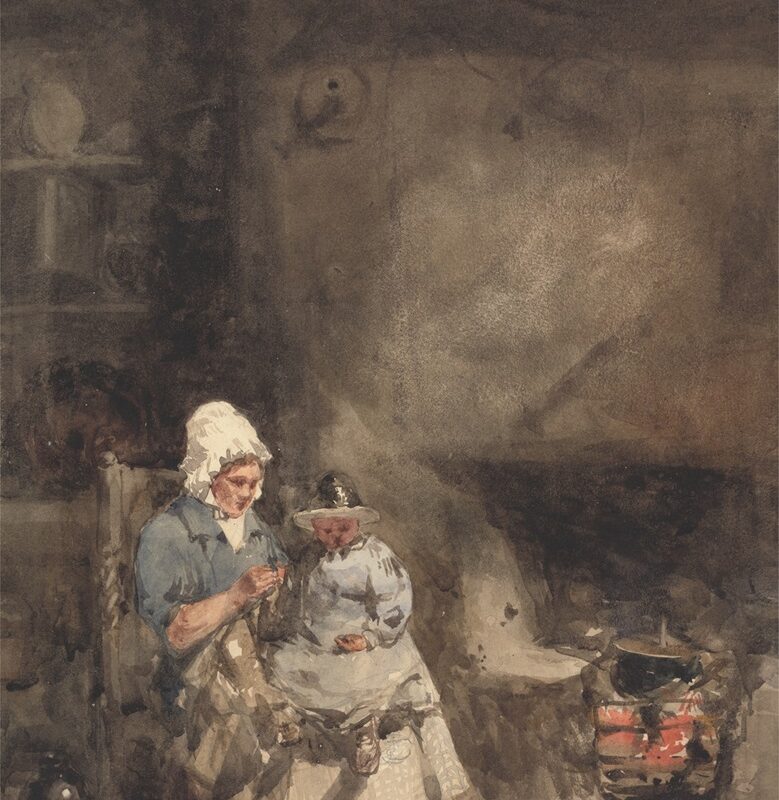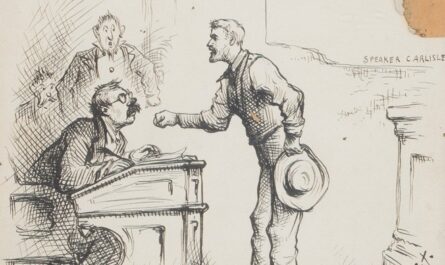I suspect the art of wintering well is much the same as living well any other time of year – and that is the art of noticing. Noticing the sounds of squirrels barking, the glittery surface of undisturbed snow in the sunlight. Noticing songbirds flitting nimbly through the hedges, after securing a seed from the feeder inside a mere second. As often as winter is associated with death and decay, there is a whole ecosystem teeming with life, charming and delighting those who would take notice. Certainly, outdoors and indoors, winter affords more than meets the eye.
Winter is often disparaged for being inconvenient. Inclement weather can make travel dangerous or impossible. There are no flowers or trees blooming, the days are dark and short, little warmth comes from the sun, and the air is sharp and dry. As Rossetti described, Earth stands like iron, water like stone. Yes, it’s easy to see why winter is called the darkest time of year – in many senses of the term. It doesn’t necessarily need to be the most unhappy time of year, though. Blankets, sparkling snow, breathing in the fresh, crisp air, limited yard work, warm foods, lighting candles and using ambient lights to bring a glow to longer hours spent indoors; the colder months in afford a comfort which warmer months can not match. While the warmth of other months encourages you soak up the sun and spend long days going, seeing, and doing, Winter invites you to sit a while and take in the peace and beauty of a fleeting moment. The glory of winter is ample time to rest, reflect, and enjoy time with loved ones.
Perhaps the midst of stillness is actually the perfect time to prepare for a new year. Perhaps turning the calendar over in the middle of winter, reflecting on the previous goals while looking ahead with optimism – celebrating with lights, fire, cakes, champagnes, and shimmers – acts as a sort of good luck omen for continuing through winter, choosing to illuminate the dark and look forward to brighter, busier days.
After the rush and pageantry of the December and New Year’s holidays passes, winter is often described as particularly bleak. What better time to celebrate light than in the darkest months of the year? All over Europe, cities and regions celebrate festivals of light. Thousands every year in France and Belgium, Scotland and Slovenia, Tyrol and Amsterdam to light torches, lanterns, or candles, admire art installations, and even gaze at ice sculptures. Transforming winter into a festive affair seems to be a special skill the Europeans in particular possess.
For centuries, the hearth – literally the floor of a fireplace – was considered the heart of the home. In the Roman religion, Vesta was the goddess of hearth, home, and family. Fascinatingly, she was usually depicted as a flame or fire burning in her temple in the Roman Forum rather than as taking a human form. She was considered a vital source of life. Likewise, the hearth was where everything important in a home happened. Through the centuries, it was the central source of heat in the winter, the setting of family gatherings in most seasons. It was where food was cooked, water was boiled, light was given off for reading, and conversation or oration was centered.
In 19th-century New England, Thoreau lamented the introduction of multiple hearths in homes as the loss of the heart of the home. In Walden, he points to multiple hearths in a home as a demonstration of the modern death of hospitality; true hospitality was sharing the same fire with your guests, gathering with and not sequestering them away to a separate room and fire.
Of course today, our hospitality isn’t just divided between multiple fireplaces. (Some homes don’t even have fireplaces!) Many homes have centralized heating, allowing members of the family to be equally warm and entertained in separate places across the house. One person can read quietly in one room while another watches television or plays games across the house, both entertained separately. Where gathering together was formerly an automatic default, today gathering requires a conscious choice, a coordination of schedules. I have heard it said, however, the heart of the home today is the kitchen. This certainly makes sense when entertaining, as the kitchen does seem to be the place people linger. Regardless of the size of the space or how much food is actually being served, the kitchen is where everyone finds themselves returning.
I recently read about an American writer’s experience spending a weekend with a Danish family to learn about hygge and cozy wintering first-hand. Hygge did recently catch on in the States as a bit of a marketing gimmick, but the concept is about an atmosphere and feeling, not purchasing a new lifestyle. The Danish concept of hygge comes from a Norwegian term meaning “well being”. While there is no direct translation into English, hygge describes a feeling of warmth, coziness, and belonging. It is similar to the German concept of Gemütlichkeit; a sense of warmth and togetherness. These cozy concepts are really about appreciating the simple things in life – such as evenings or weekends spent with loved ones – and appreciating those things in the moment.
On a Sunday afternoon, this Danish family gathered with friends in the living room to read their own books, sitting under blankets with a fire crackling on the television and the room aglow with candles and soft lighting. They passed around warm mugs of coffee and mulled wine. After a lunch of pancakes, the entire group for a walk to take in the fresh air. After, everyone gathered around the table for a meal of porridge, fresh bread, and finger foods. How could you not enjoy such a satisfying scene? Yes, winter gives ample opportunity to find ways to more fully enjoy your time. The weather may be difficult; the ground is hard, the air is dry, and you’re probably not dining outdoors. All of this just means it’s cozier inside and time for candles, thick socks, warm comfort foods, and more time to read or sleep and enjoy simple pleasures. As we can see, while the fireplace may be optional these days, the concepts of hygge and hearth remain intertwined. In a survey among Danes, asking them which things they most associated with hygge, the results were hot drinks, candles, and fireplaces respectively.
Is there anything more relaxing than sitting inside next to a fire (or candle), sipping from a mug of something warm and tasty, while watching the snow come down outside? It seems the Europeans have the right idea with celebrating festivals of light in the darker months. What else is there to do but eat, drink, and enjoy the company of those you love? It seems to me the purpose of winter – as much as any season can be said to have a purpose – is to rest and reflect and conserve your energy for the warmer days to come and to notice the good things around you.
Image: A Woman and Child by a Hearth, William Evans of Bristol. 1842.




